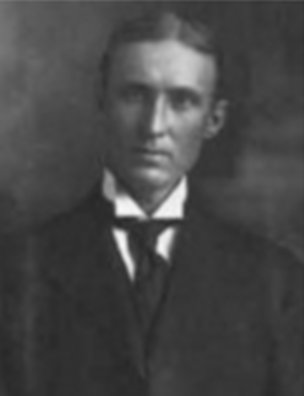Carl Lampland on:
[Wikipedia]
[Google]
[Amazon]
 Carl Otto Lampland (December 29, 1873 – December 14, 1951) was an American astronomer. He was involved with both of the
Carl Otto Lampland (December 29, 1873 – December 14, 1951) was an American astronomer. He was involved with both of the

Lampland photographs of Mars
{{DEFAULTSORT:Lampland, Carl Otto 1873 births 1951 deaths American astronomers American people of Norwegian descent Discoverers of asteroids Indiana University Bloomington alumni People from Hayfield, Minnesota Valparaiso University alumni Fellows of the American Academy of Arts and Sciences Members of the American Philosophical Society
 Carl Otto Lampland (December 29, 1873 – December 14, 1951) was an American astronomer. He was involved with both of the
Carl Otto Lampland (December 29, 1873 – December 14, 1951) was an American astronomer. He was involved with both of the Lowell Observatory
Lowell Observatory is an astronomical observatory in Flagstaff, Arizona, United States. Lowell Observatory was established in 1894, placing it among the oldest observatories in the United States, and was designated a National Historic Landmark ...
solar system projects, observations of the planet Mars
Mars is the fourth planet from the Sun. It is also known as the "Red Planet", because of its orange-red appearance. Mars is a desert-like rocky planet with a tenuous carbon dioxide () atmosphere. At the average surface level the atmosph ...
and the search for Planet X.
Biography
Carl Otto Lampland was born near Hayfield in Dodge County, Minnesota. He was born into a family of ten children. Both his father Ole Helliksen Lampland (1834–1914) and his mother Berit Gulliksdatter Skartum (1850–1943) were born in Norway. He was educated first at Valparaiso Normal School in Valparaiso, Indiana, where he earned a B.S. degree in 1899. He then studied atIndiana University Bloomington
Indiana University Bloomington (IU Bloomington, Indiana University, IU, IUB, or Indiana) is a public university, public research university in Bloomington, Indiana, United States. It is the flagship university, flagship campus of Indiana Univer ...
, where he received a B.A. degree in astronomy in 1902, an M.A. in 1906, and an honorary LL.D in 1930.
He first went to Lowell Observatory
Lowell Observatory is an astronomical observatory in Flagstaff, Arizona, United States. Lowell Observatory was established in 1894, placing it among the oldest observatories in the United States, and was designated a National Historic Landmark ...
in 1902 when invited by Percival Lowell
Percival Lowell (; March 13, 1855 – November 12, 1916) was an American businessman, author, mathematician, and astronomer who fueled speculation that there were canals on Mars, and furthered theories of a ninth planet within the Solar System ...
and Lampland was closely involved with Lowell in planetary observation. He designed cameras used for astronomy and also designed and maintained telescopes, including resilvering the mirror of the telescope. He also constructed thermocouple
A thermocouple, also known as a "thermoelectrical thermometer", is an electrical device consisting of two dissimilar electrical conductors forming an electrical junction. A thermocouple produces a temperature-dependent voltage as a result of the ...
s and used them to measure temperatures of planets. He won the Royal Photographic Society
The Royal Photographic Society of Great Britain, commonly known as the Royal Photographic Society (RPS), is the world's oldest photographic society having been in continuous existence since 1853. It was founded in London, England, in 1853 as th ...
Medal in 1905 for the camera which he designed for the 24-inch Clark telescope. Together with William Coblentz
William Weber Coblentz (November 20, 1873 – September 15, 1962) was an American physicist notable for his contributions to infrared radiometry and spectroscopy.
Early life, education, and employment
William Coblentz was born in North Lima, Oh ...
, he measured large differences between the day and night temperatures on Mars which implied a thin Martian atmosphere. He discovered the asteroid 1604 Tombaugh. In 1907 Lampland and Lowell won a Royal Photographic Society
The Royal Photographic Society of Great Britain, commonly known as the Royal Photographic Society (RPS), is the world's oldest photographic society having been in continuous existence since 1853. It was founded in London, England, in 1853 as th ...
exhibition medal for their photographs of Mars.

Honors
*Lampland was elected to theAmerican Academy of Arts and Sciences
The American Academy of Arts and Sciences (The Academy) is one of the oldest learned societies in the United States. It was founded in 1780 during the American Revolution by John Adams, John Hancock, James Bowdoin, Andrew Oliver, and other ...
in 1915.
*Lampland was elected to the American Philosophical Society
The American Philosophical Society (APS) is an American scholarly organization and learned society founded in 1743 in Philadelphia that promotes knowledge in the humanities and natural sciences through research, professional meetings, publicat ...
in 1931.
*The asteroid 1767 Lampland was named in his memory.
*The lunar crater '' Lampland'' was named after him.
*The Martian crater ''Lampland'' was also named after him.
*The C.O. Lampland Collection is maintained at the Lowell Observatory Archives in Flagstaff.
*His date of birth is the starting point for the Mars Sol Date calendar.
References
Related reading
*Slipher, Earl C. (1962) ''The Photographic Story of Mars'' (Cambridge Massachusetts: Sky Publishing) *Croswell, Ken (1997) ''Planet Quest: The Epic Discovery of Alien Solar Systems'' (New York: The Free Press) *Hughes, Stefan (2012) ''Catchers of the Light: The Forgotten Lives of the Men and Women Who First Photographed the Heavens'' (ArtDeCiel Publishing) . *Littman, Mark (1990) ''Planets Beyond: Discovering the Outer Solar System'' (New York: Wiley) *Schilling, Govert (2009) ''The Hunt for Planet X: New Worlds and the Fate of Pluto'' (New York: Springer)External links
Lampland photographs of Mars
{{DEFAULTSORT:Lampland, Carl Otto 1873 births 1951 deaths American astronomers American people of Norwegian descent Discoverers of asteroids Indiana University Bloomington alumni People from Hayfield, Minnesota Valparaiso University alumni Fellows of the American Academy of Arts and Sciences Members of the American Philosophical Society